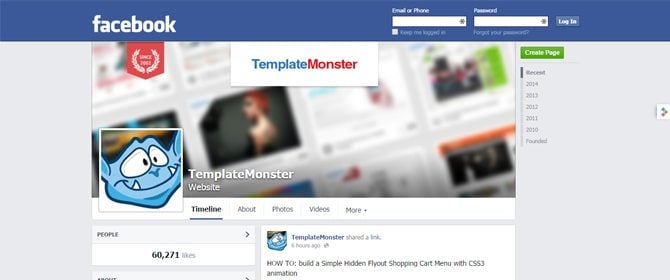How to Integrate Social Identity Theory into Web Design
There’s a lot of work that comes into crafting a successful website design – you have to take into account the specific preferences of the industry, find out the unique traits of its consumers and use this information to develop easy to use navigation, to provide a seamless and easy experience for the user.
But the emergence of social media has created a whole new realm of possibilities online that have touched every aspect of the virtual world, including that of web designers. It’s no longer enough to provide the users with a great experience individually – those that want to stand out and build long-lasting relationships with their clients must also ensure that there will be a constant conversation going on between the users as well.
Luckily, this is not rocket science – while there’s work to be done, a relatively simple concept known as social identity theory can help web designers go beyond the design itself, and instead make it an essential tool in providing the visitors with a platform where they can share experiences and form bonds, which in the end means a consistently growing client list for the business.
What is Social Identity Theory?
Well, in short, social identity theory suggests that human behaviour can be predicted based of perceived group status differences or similarities, and that this self-identification with certain groups can form a sense of pride and self-esteem, as well as a have a bonding effect between those who belong to the perceived social group.
In simper terms, through self-categorisation and social comparison, an individual can attributes positive characteristics to himself and others in the in-group of his perceived social group, while attributing negative characteristics to those outside of it.
But What Does it Have to do With Web Design?
You might be starting to see how this could potentially help you figure out ways to bond your consumers using your UX – if you could figure out what kinds of interests, preferences and even opinions your consumers might share, you can then use these things to relate them to your product, or, alternatively, help associate your brand with the positive experiences they share.
A great example of this would be the social media giant Facebook, which has mastered the art of maximising the potential of self-categorisation and social comparison – people gladly share their personal interests and activities with others, and this way an intricate web of new connections is built, which helps Facebook to provide laser-targeted ads, and also constantly spread their reach through new groups of people.
How Can Your Business Use Social Identity Theory?
Each business model is different and that means that there isn’t a one-size-fits-all solution to finding your way to form a connection between your consumers. But that also means that there are unique opportunities, no matter the field you might be in, to utilise the potential of social identity theory in web design.
The first thing you should do when trying to form a strategy is to answer a few simple questions. Firstly, you should ask yourself what are the common experiences your users share that relate to the product you sell? Secondly, how could you potentially nudge your users to socially interact around your product?
You can also take a look at what your competitors are doing – they might be doing it poorly and thus you could be able to use the same approach more effectively, or it could give you your own unique spin on the concept and help you see the unique potential that you have with your consumer base.
Of course, it must be said that a big part of this approach will always be social media, and besides having the right strategy, a certain level of commitment is also required – you will have to engage the audience through multiple platforms, along with developing a distinctive voice of your brand that will not only reinforce your bond with your customers, but will also contribute to strengthen your brands perception as a trait of the “in-group”.
Finally, you will have to figure out how all of this fits in with your design and with your UX, because implementing these ideas can be just as challenging as generating them. Still, in the end, it is well worth the trouble.
Conclusion
In today’s world, it’s not enough anymore to simply hire a designer and a social media agency and hope that this will be enough to establish a strong presence online.
A strategy that promotes not only the interaction between a brand and its consumers, but between the consumers as well is a must – the forming connections between your users can help you greatly expand your reach in the marked and, even more importantly, ensure that your users will be much more inclined to think ofyour brand as a part of their own identity.
Don’t miss out these all-time favourites
- The best hosting for a WordPress website. Tap our link to get the best price on the market with 82% off. If HostPapa didn’t impress you check out other alternatives.
- Monthly SEO service and On-Page SEO - to increase your website organic traffic.
- Website Installation service - to get your template up and running within just 6 hours without hassle. No minute is wasted and the work is going.
- ONE Membership - to download unlimited number of WordPress themes, plugins, ppt and other products within one license. Since bigger is always better.
Get more to your email
Subscribe to our newsletter and access exclusive content and offers available only to MonsterPost subscribers.




Leave a Reply
You must be logged in to post a comment.